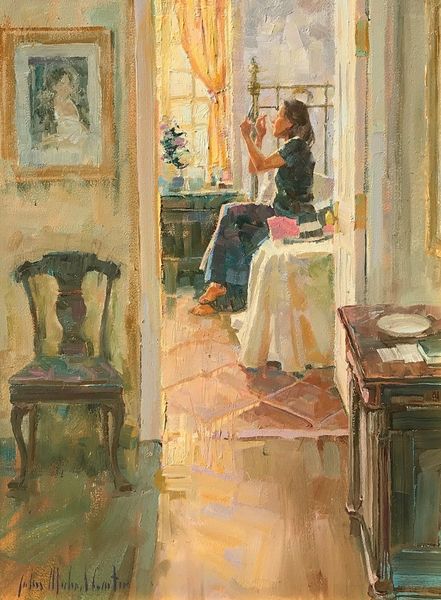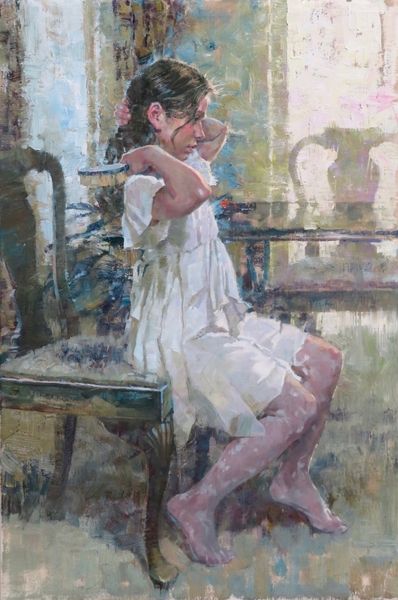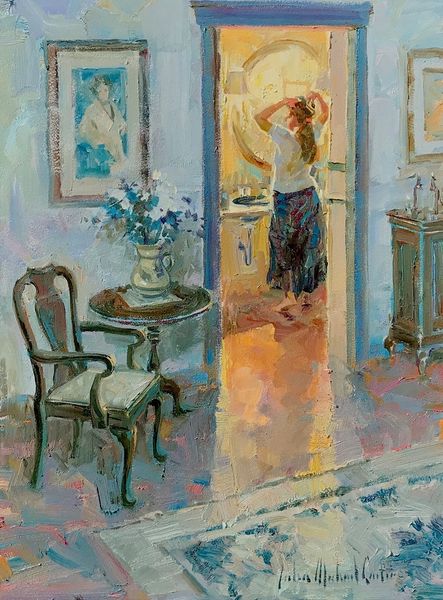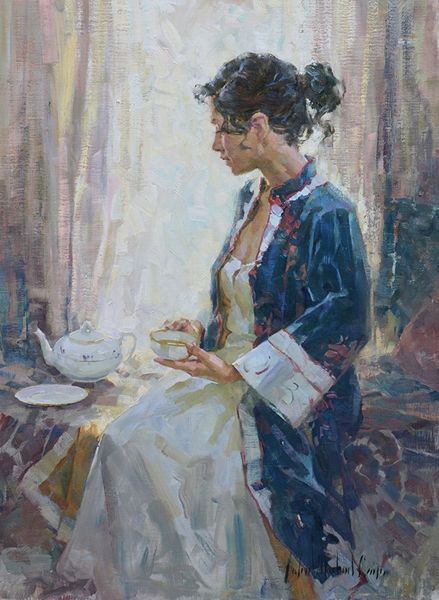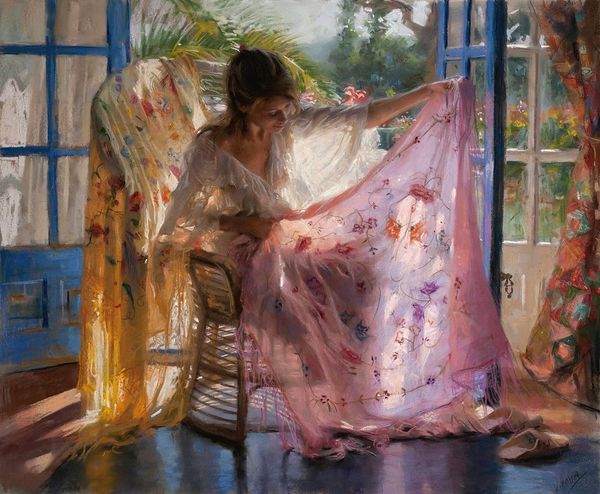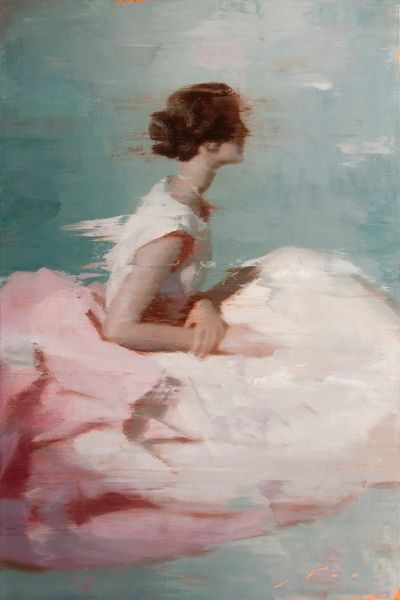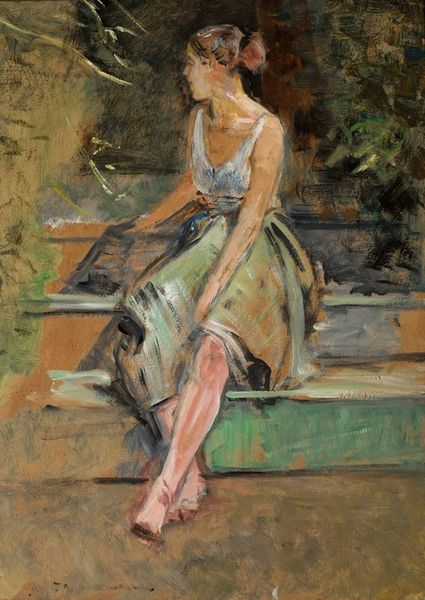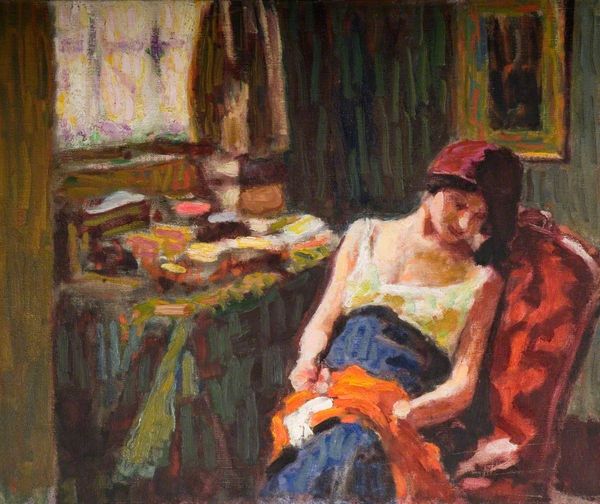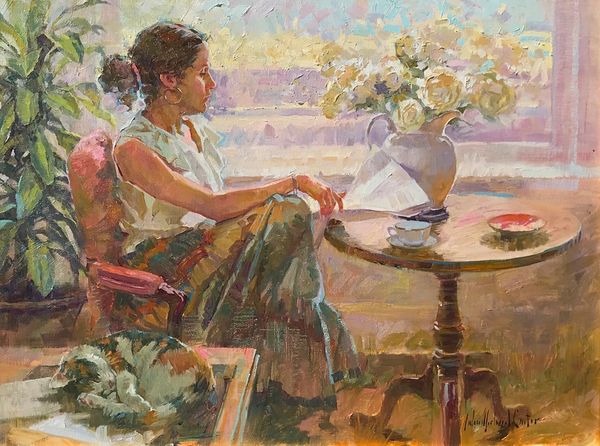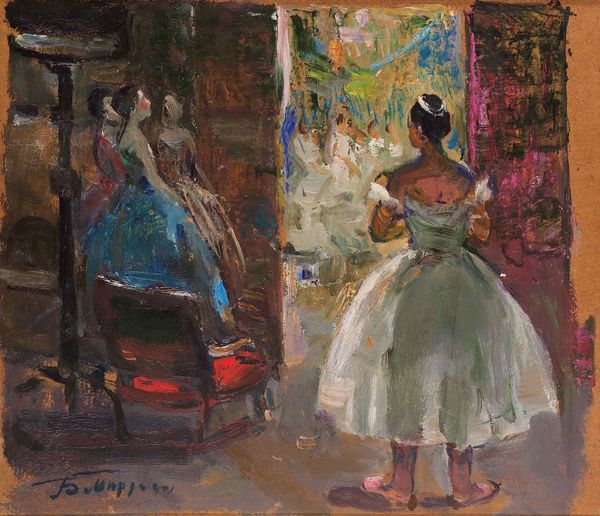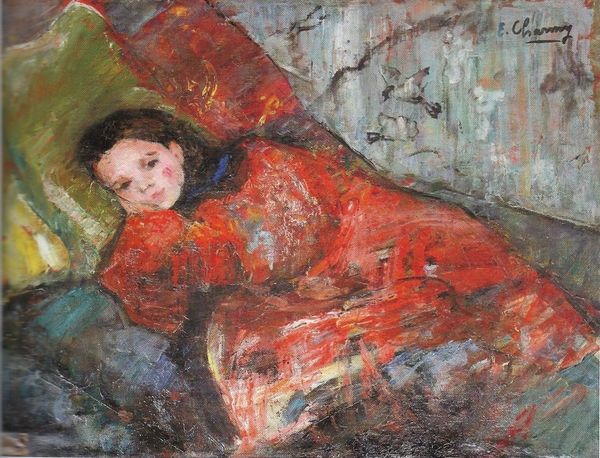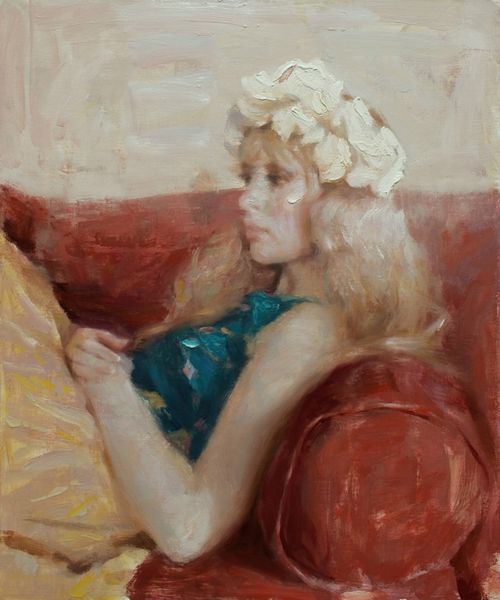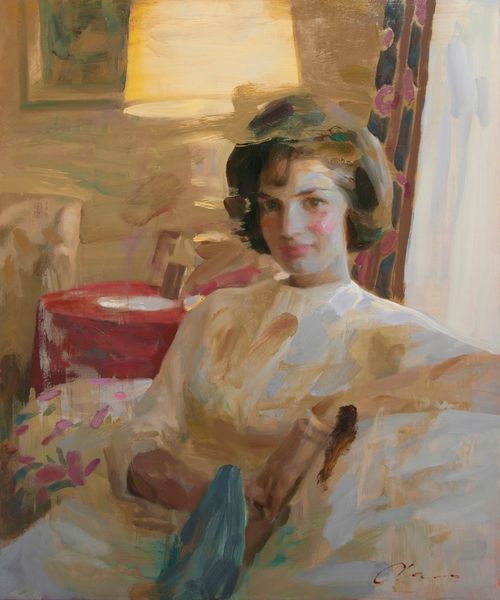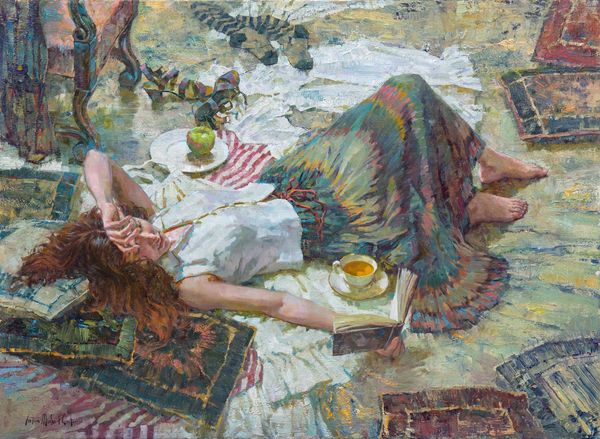
painting, oil-paint, impasto
#
portrait
#
figurative
#
painting
#
oil-paint
#
oil painting
#
impasto
#
acrylic on canvas
#
genre-painting
#
modernism
Copyright: Modern Artists: Artvee
Curator: John Michael Carter’s painting, "Conversation," draws the eye with its striking portrayal of a woman in a moment of reflection. The oil paint, applied with an impasto technique, really emphasizes the texture and materiality. What's your first impression? Editor: My initial reaction is to the visible brushstrokes – that’s the first conversation I have with this work. The heavy layering of the paint gives the scene a kind of raw, unfiltered emotion. It is really the weight of the paint creating all of this. Curator: That directness definitely contributes to the overall mood. I'm also struck by the composition, how the woman's pose directs our gaze outward, seemingly beyond the frame itself. I can't help but consider how the space—her domestic setting—plays into traditional expectations of femininity and interiority. Editor: Absolutely, and that domesticity is constructed through very particular materials, isn’t it? Notice the plushness of the couch, the thick, woven rug – all pointing to a certain level of comfort and consumption. It all creates and frames the central figure. The materiality here suggests an emphasis on consumerism. Curator: Indeed. Looking closely, we can see the texture built up with visible strokes of pigment in every single aspect of the painting—from the fabric of her skirt to the glassware by the window. Also, the two glasses of wine; that creates a space of expected, or hoped-for, engagement with someone absent, who isn’t there to share that space. The materiality of expectation? Editor: Perhaps a silent conversation or, maybe, a conversation that is perpetually on hold. Even her own costume or garb signals at a different potential for exchange – she is clothed and present. I suppose I consider less of her emotional state and I lean more towards how those visible, thick brushstrokes, how the heavy impasto itself speaks to labor, time, and value tied to the creation of art, even domestic art. Curator: That emphasis on the means of production highlights something crucial about art’s place within society—that is produced and crafted labor—but I’m glad that we each bring different approaches to the work as a sign of the diverse readings and associations it fosters. Editor: Ultimately, it’s the layering and careful crafting, and materiality that make the real conversation so interesting for me in terms of our dialogue today.
Comments
No comments
Be the first to comment and join the conversation on the ultimate creative platform.
